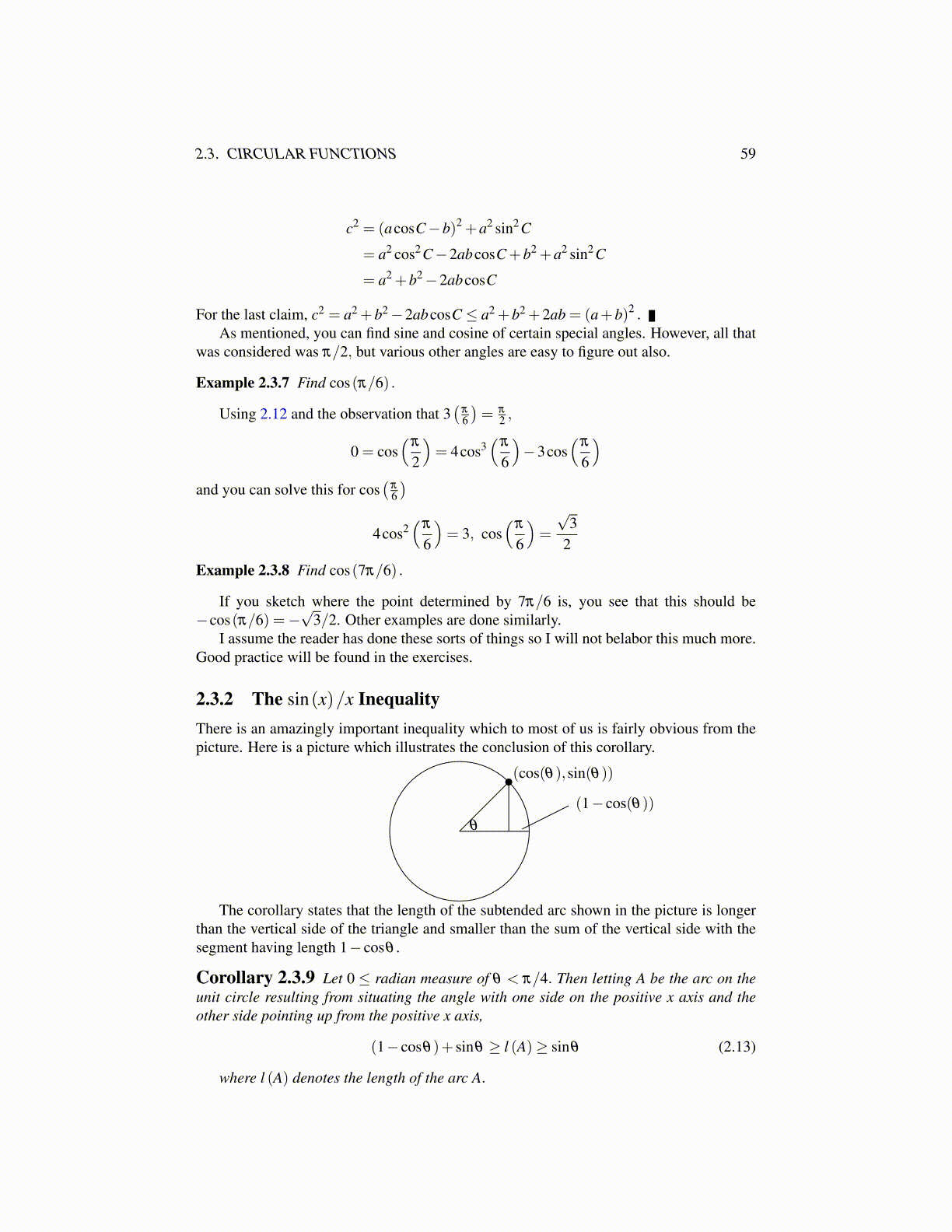
2.3. CIRCULAR FUNCTIONS 59
c2 = (acosC−b)2 +a2 sin2 C
= a2 cos2 C−2abcosC+b2 +a2 sin2 C
= a2 +b2 −2abcosC
For the last claim, c2 = a2 +b2 −2abcosC ≤ a2 +b2 +2ab = (a+b)2 .As mentioned, you can find sine and cosine of certain special angles. However, all that
was considered was π/2, but various other angles are easy to figure out also.
Example 2.3.7 Find cos(π/6) .
Using 2.12 and the observation that 3(
π
6
)= π
2 ,
0 = cos(
π
2
)= 4cos3
(π
6
)−3cos
(π
6
)and you can solve this for cos
(π
6
)4cos2
(π
6
)= 3, cos
(π
6
)=
√3
2
Example 2.3.8 Find cos(7π/6) .
If you sketch where the point determined by 7π/6 is, you see that this should be−cos(π/6) =−
√3/2. Other examples are done similarly.
I assume the reader has done these sorts of things so I will not belabor this much more.Good practice will be found in the exercises.
2.3.2 The sin(x)/x InequalityThere is an amazingly important inequality which to most of us is fairly obvious from thepicture. Here is a picture which illustrates the conclusion of this corollary.
θ
(cos(θ),sin(θ))
(1− cos(θ))
The corollary states that the length of the subtended arc shown in the picture is longerthan the vertical side of the triangle and smaller than the sum of the vertical side with thesegment having length 1− cosθ .
Corollary 2.3.9 Let 0 ≤ radian measure of θ < π/4. Then letting A be the arc on theunit circle resulting from situating the angle with one side on the positive x axis and theother side pointing up from the positive x axis,
(1− cosθ)+ sinθ ≥ l (A)≥ sinθ (2.13)
where l (A) denotes the length of the arc A.